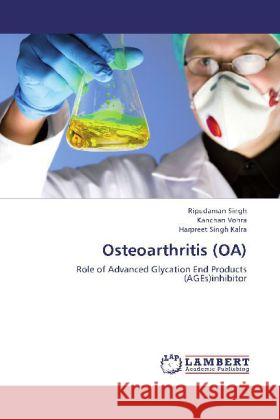Osteoarthritis (OA) : Role of Advanced Glycation End Products (AGEs)inhibitor » książka
Osteoarthritis (OA) : Role of Advanced Glycation End Products (AGEs)inhibitor
ISBN-13: 9783659256875 / Angielski / Miękka / 2012 / 108 str.
Osteoarthritis (OA) is defined as a focal lesion of the articular cartilage, combined with a hypertrophic reaction (sclerosis) in the subchondral bone and new bone formation (osteophytes) at the joint margins (Van den Berg, 2000). OA is associated with a loss of balance between synthesis and degradation of macromolecules needed to provide articular cartilage with its biomechanical and functional properties. At the same time, changes occur in the structure and metabolism of synovium, subchondral bone and other tissues of joint. Conventional therapeutic options employed in the management of osteoarthritis are simple analgesics & NSAIDs, but these options produce sub-optimal benefits and are associated with adverse-safety profile (Walker- Bone, 2003). NSAIDs, in particular can cause serious side effects including peptic ulcer and hepatic or renal failure (Sanghi et al., 2009). Other available therapies like nutraceuticals (e.g. glucosamine, chondriotin sulfate etc.) and various anti-oxidants (e.g. Vitamin E, selenium, niacinamide, etc.) are also not so effective in delay of progression of OA (Reichenbach et al., 2007; Brand et al., 2001; Hill et al., 1990; Jonas et al., 1996).











